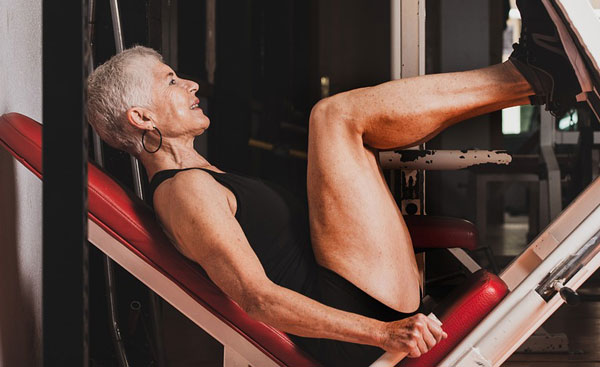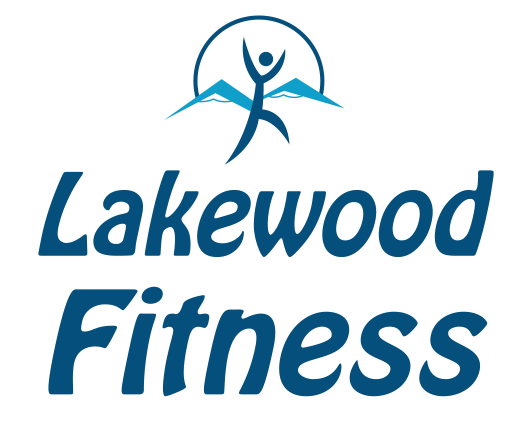
Fitness-50 and Beyond
What does fitness beyond 50 hold for us? Does it mean that you are participating in a community walking program once you turn 50 because you are “over the hill”? Does it mean that you should no longer perform resistance training because it is too risky for someone your age? Is 50 the “cut-off” for participation in mainstream health/fitness programs or athletic events? Absolutely not! In fact, there are those in their 70’s and 80’s running marathons, participating in triathlons, and reaching amazing levels of fitness. Some began in their teens and others did not begin serious participation until they were well into their 40’s, 50’s and 60’s targeting senior or master’s level programs/events which enabled them to pursue their health and fitness goals until the day they are no longer on this earth.
We really can be fit at any age. Naturally, there are physiological and structural changes that occur as we age such as reduced muscle mass (i.e., some sources say adults lose 4-6 pounds of muscle tissue per decade), strength and cardiovascular endurance levels. However, many of these progressions may be slowed, even stopped in some cases, with regular participation in a safe, well-structured/designed fitness program. What level you would like to pursue is certainly impacted by your general health and limitations. But, even with considerable limitations due to past injuries or poor structural/biomechanics over time, most individuals over the age of 50 may achieve and maintain an optimal level of fitness for their bodies.
The key is to remember that we are all unique individuals. Genetics does play a large role in whether or not one 70-year-old might be able to complete a marathon and another 70-year-old cannot manage the impact of running. But it does not alone dictate what fitness level your body may reach with proper training and consistent participation.
So, what do you do if you are 50 and beyond and have never consistently participated in a fitness program or athletic activities? Or, if it has been years since you really moved your body through space and time, exerting and becoming breathless? There are guidelines you may follow for older adults set out by the American College of Sports Medicine (i.e., ACSM) for physical activity which take into consideration the physical changes in the body as we age. However, keep the example of the two 70-year-olds above in mind when determining how to apply these guidelines.
You may be able to perform more or less than the guidelines suggest. As with any fitness program, you should seek out the advice of your physician prior to participation to ascertain the specific guidelines you will need to follow based upon your body. You should have a comprehensive fitness assessment performed to establish a fitness baseline, complete a health history questionnaire, and consult with your health/fitness professional to discuss your limitations prior to beginning any exercise program.
Below are the ACSM guidelines as well as a few suggestions for integrating health and fitness into your life from 50 and beyond. The benefits far outweigh the risks, for most, so do not allow your age to prevent you from experiencing a healthier and happier life.
ACSM Position Stand (this is not meant to be complete, just to cover the basic guidelines—if you would like to review the entire stand, visit the website at www.acsm.org).
Endurance – accumulate 30-60 minutes in bouts of at least 10 minutes each totaling 150-300 minutes per week. The longer the duration, the lower the intensity; the shorter the duration, the higher the intensity level depending upon the individual’s health/fitness level. The type of exercise recommended includes walking, aqua programs, and cycling for those with orthopedic limitations.
Resistance Training – at least twice a week, on non-consecutive days performing a progressive program of 8-12 repetitions of 8-10 exercises addressing all major muscle groups of the body. Intensity level depends upon the individual’s health/fitness level.
Flexibility – static stretches which address all major muscle groups of the body at least twice per week.
Neuromotor – while there are no specific guidelines regarding frequency, intensity, or duration, it is suggested that the program be progressive in nature and concentrates on challenging the base of support (BOS), the center of gravity (COG) and the posture (i.e., walking on heels/toes) as well as sensory challenges (i.e., eyes open/closed).
Special Considerations – intensity/duration of all physical fitness components may need to be very low for those highly de-conditioned individuals, those with chronic health problems or who are functionally limited.
Over 50 tips:
• Safety first. The last thing you want to do is to injure yourself. So, choose programs/activities that concentrate on safety. Progressive, goal-oriented programs are great choices. For example, in the balance/stability component of a program you would begin with a wide BOS, and progress to a narrower BOS and would progress from supported balance work to unsupported.
• Effectiveness second. The program must effectively address your fitness goals.
• Cognition challenges. Select programs which challenge your cognitive abilities and keep your problem-solving skills sharp.
• If you are new to fitness, then begin slowly, perhaps walking ten minutes once/twice a day.
• Seek out professional guidance from a qualified, certified, and experienced trainer who is specifically trained at working with the 50+ age group.
• Many fitness facilities and community centers offer excellent older adult fitness programs. However, just because you are 50 does not necessarily mean you should be confined to that type of programming. Do not let your age alone determine the program format. Many 50+ clients are in the same fitness classes as those in their 20’s, in fact it is commonplace. Therefore, discuss your limitations with the program director and ask for their guidance in choosing the right fit for you.
• Additionally, once you are regularly performing your program, you may experience a positive change in your fitness level which may require you to seek out more challenging formats.
• Listen to your body. If it hurts, don’t do it! Ask the trainer for modifications and if you are going to work out on your own, spend a little money and time with your trainer to design a program specifically for you. Review the program with them prior to performing it alone and stay in touch continually asking for modifications, as necessary.
• Choose programs that are fun. The more you enjoy it, the more likely you are to do it.
By: Jackie Wright, Owner/Manager Lakewood Fitness
